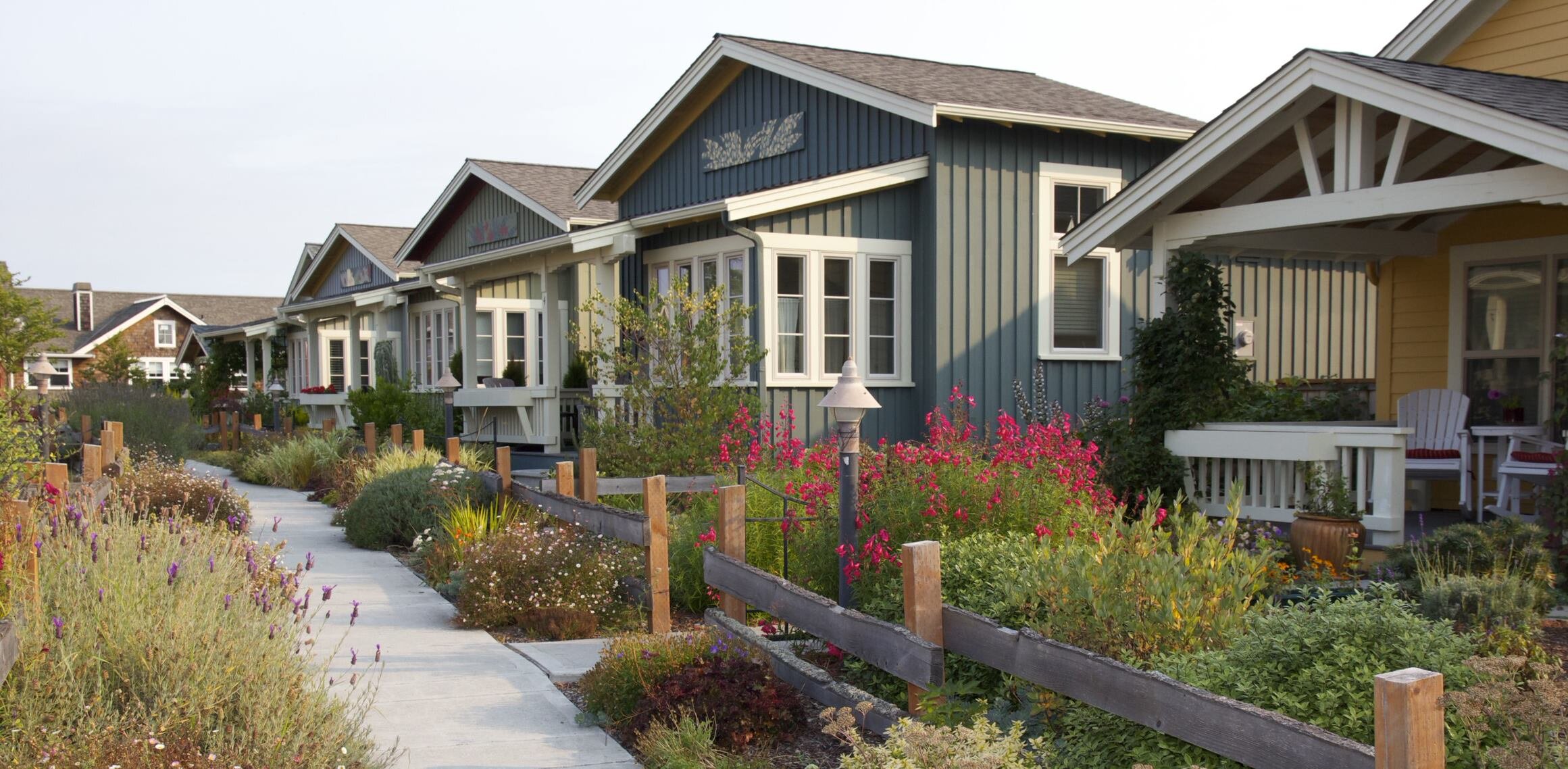A silver wave is coming to Arlington.
Older adults aged 65 to 69 and 70 to 74 were among the fastest-growing age segments in Arlington from 2010 to 2018. By 2045, the number of 85+ Arlingtonians is forecasted to jump 65.5%, well over double the projected countywide growth of 26.6%. Many of these seniors have seen the County undergo many changes over the past few decades—changes that may ultimately make it harder for them to stay in Arlington. By allowing for the construction of smaller and more age-friendly homes, we can respond to changing demographics and better serve Arlington’s growing population of seniors.
Arlington seniors are more likely than their neighbors to be cost-burdened
Cost-burdened households in Arlington (2019)
As people age, their needs change, and the homes they lived in for years may no longer fit their needs or lifestyle. Kids move out and their bedrooms now sit empty. Mobility challenges make it too hard to climb stairs or maintain a yard. Even if seniors want to swap their larger home for a more modestly sized alternative, Arlington’s current housing supply isn’t meeting their needs. For too many seniors, downsizing means leaving the community they’ve called home for years.
Missing Middle Housing offers a path forward for seniors who want to shrink their home without saying goodbye to the community that makes them feel most at home.
Missing Middle Housing types’ intentional smaller scale is appealing to a variety of buyers and renters—including downsizing seniors—as their reduced size comes with a reduced workload. This manageable scale is particularly important for seniors with mobility challenges. Sixteen percent of people in the U.S. age 65 and over reported difficulties with mobility (e.g. walking or climbing stairs) in 2018, making it the most commonly reported disability. By increasing the supply of easily manageable housing in existing residential communities, we can better accommodate this growing population.
Missing Middle Housing helps to create a stronger sense of community through its proximity to neighborhood amenities, neighbors living in closer proximity, and the integration of shared spaces. A strong social life is critical for seniors and is linked to many health benefits, including reduced rates of depression and a longer life span. This has become even more evident during the past year as COVID-19 has caused many seniors to become even more isolated.
Smaller housing units can mean smaller mortgages and lower rents, which are helpful for people on a fixed income (e.g. retirement benefits). Some Missing Middle Housing types with multiple units can also incorporate opportunities for rental income. This can reduce the financial burden on Arlington’s seniors and help them afford other services and necessities as time goes on.
To the extent that Missing Middle Housing is newly developed or renovated, the homes can more easily be made accessible for seniors through either fully ADA-compliant features or age-friendly Universal Design practices. For multi-unit structures, this is an ideal option for the unit(s) on the first floor that allow accessible one-level living spaces.
Missing Middle isn’t just good for seniors: it’s good for families as a whole. Multi-generational families can benefit from Missing Middle Housing where family members can reside together or nearby in the neighborhood. When we create an environment where Arlingtonians of any age can thrive, our community stands to benefit for years to come.
In Case You Missed It: Missing Middle Housing and Arlington’s Seniors Webinar
On March 25, 2021, Arlington residents and community leaders joined us for a webinar on Missing Middle Housing and Arlington’s Seniors. In a conversation moderated by Maureen Markham (Arlington Neighborhood Village), panelists Danielle Arigoni (Director, AARP Livable Communities) and Erica Wood (Arlington Age-Friendly Task Force) explored ways to improve Arlington’s livability for seniors and the potential for Missing Middle Housing in the County. Issues discussed included impending demographic shifts, Arlington’s livability, universal design, and more.
On the issue of affordability, Arigoni said, “It’s a shame that people who have lived in Arlington all their lives and have so much to contribute wouldn’t be able to see a viable path forward to remain in Arlington. That’s a real loss for our community.”
“If we design and reimagine sites differently, we can engineer more interaction among people and across generations that ultimately enrich the lives of everyone who lives there. ”
Wood agreed, saying, “I would hate to think that we here in Arlington who aim to be so inclusive are forcing older people out instead of providing the affordable and accessible options that they need.”
The panelists also looked at Missing Middle Housing’s potential to improve quality of life and foster a sense of community. “Another asset of Missing Middle Housing is that it opens the door to unique land use and site designs that currently are not very common in this area,” said Arigoni. “Smaller homes that are designed to be affordable, accessible, and to facilitate connection and common spaces—that’s a real opportunity that is underserved right now. If we design and reimagine sites differently, we can engineer more interaction among people and across generations that ultimately enrich the lives of everyone who lives there. This can’t happen easily with the existing zoning codes, but we know that we can do better and we need to do better.”
Reflecting on how the COVID-19 pandemic has impacted older Arlingtonians, Wood said, “During the pandemic, we’ve heard about social isolation and how technology is helping to address it. But nobody has said that changes in zoning would help decrease isolation levels. We need to get that on the radar.”
Wood also mentioned the health benefits that can arise when seniors are less isolated. One of the things about growing old in a single-family house is that people won’t know if you have an accident,” she said. “So in addition to helping with the social isolation, community-oriented housing options give people an opportunity to look out for each other.”

